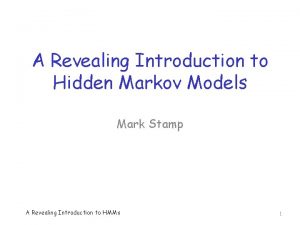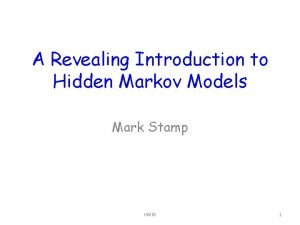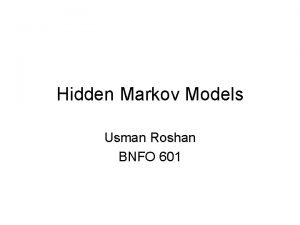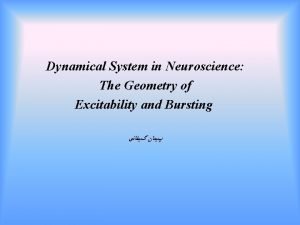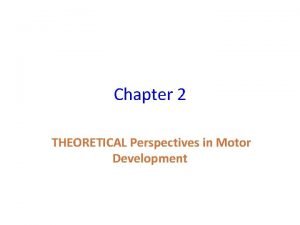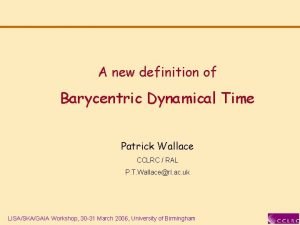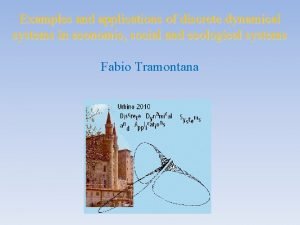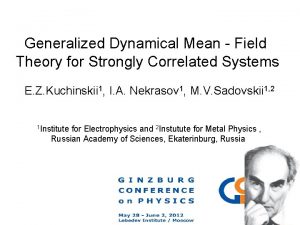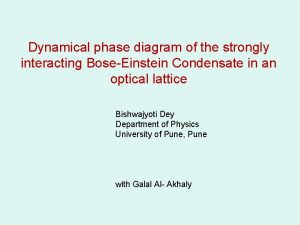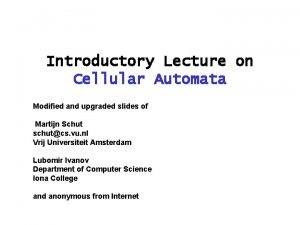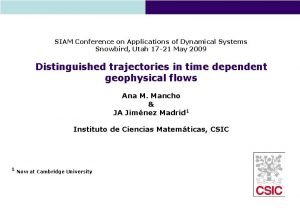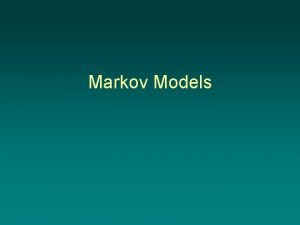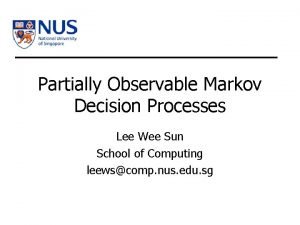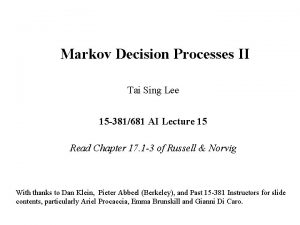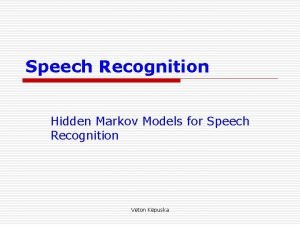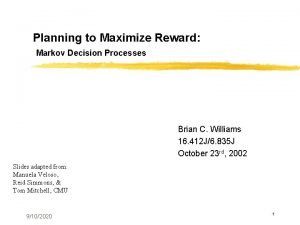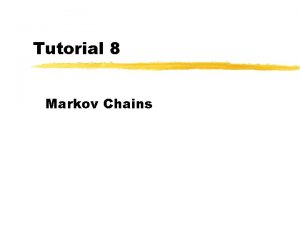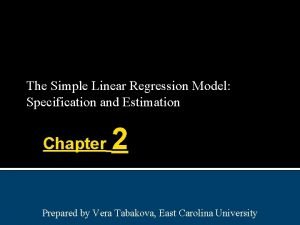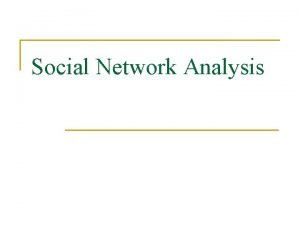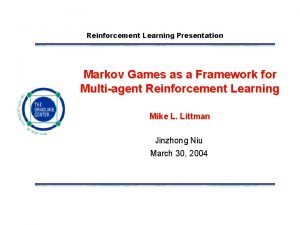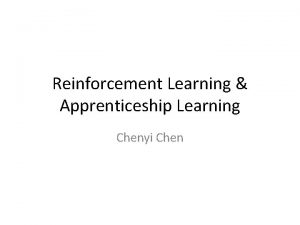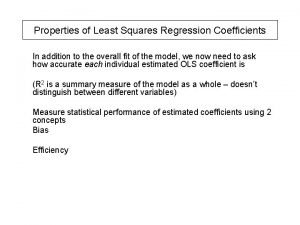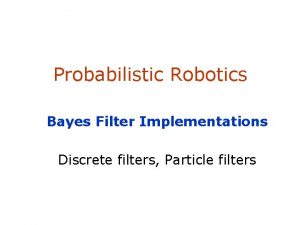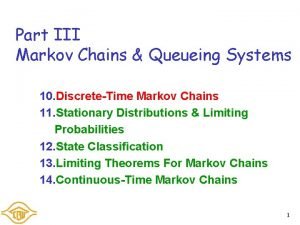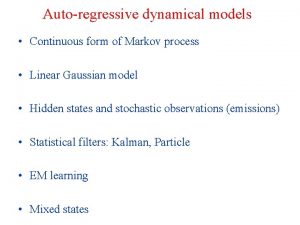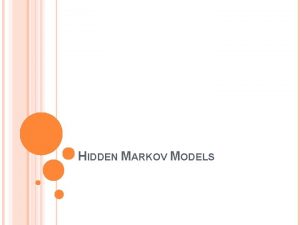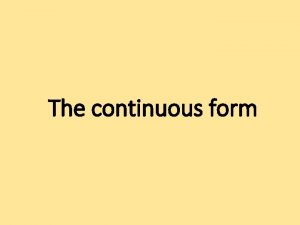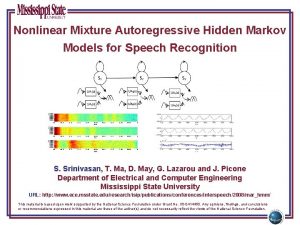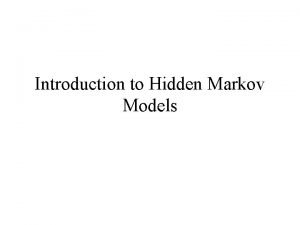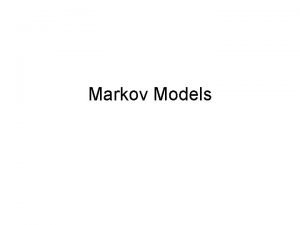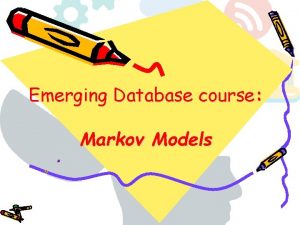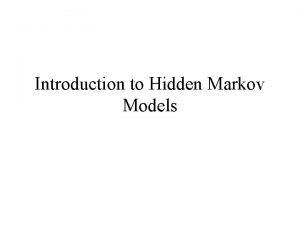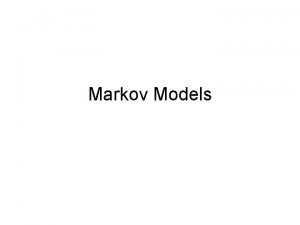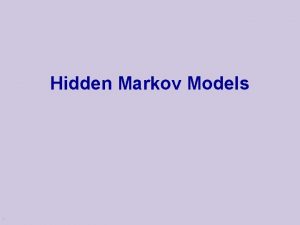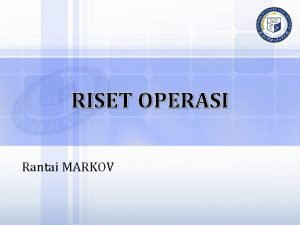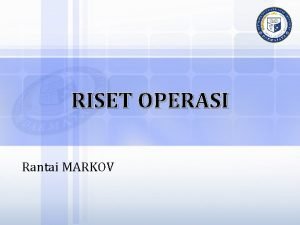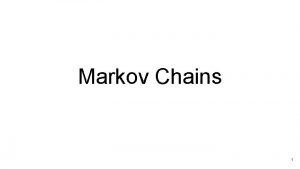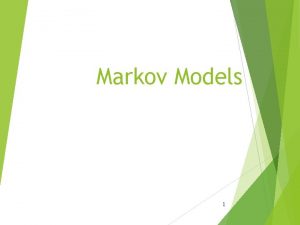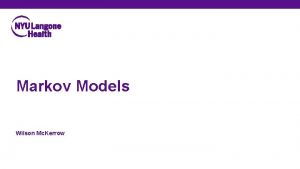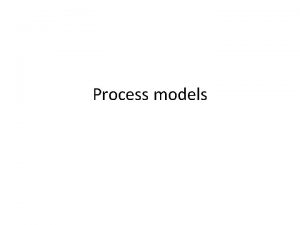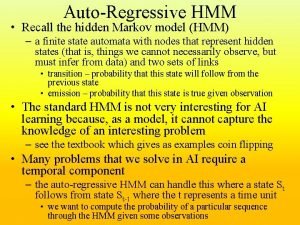Autoregressive dynamical models Continuous form of Markov process
































- Slides: 32

Auto-regressive dynamical models • Continuous form of Markov process • Linear Gaussian model • Hidden states and stochastic observations (emissions) • Statistical filters: Kalman, Particle • EM learning • Mixed states

Auto-regressive dynamical model • Configuration ARP order • AR model possibly nonlinear driven by independent noise • Parametric shape/texture model, eg curve model:

Deformable curve model: Planar affine + learned warps Active shape models (Cootes&Taylor, 93) Residual PCA (“Active Contours”, Blake & Isard, 98) Active appearance models (Cootes, Edwards &Taylor, 98)

Linear AR model (“Active Contours”, Blake and Isard, Springer 1998) • Configuration (1 st order) • Linear Gaussian AR model • Prior shape • “Steady state” prior

Gaussian processes for shape & motion intra-class (Reynard, Wildenberg, Blake & Marchant, ECCV 96) single object

Kalman filter (Gelb 74) • Stochastic observer independent noise • Kalman filter (Forward filter) • Kalman smoothing filter (Forward-Backward) also etc.

Classical Kalman filter

Visual clutter

Visual clutter observational nonlinearity

Particle Filter: Non-Gaussian Kalman filter www. research. microsoft. com/~ablake/talks/Monte. Carlo. ppt

Particle Filter (PF) continue

“Jet. Stream”: cut-and-paste by particle filtering • particles “sprayed” along the contour

Propagating Particles l l particles “sprayed” along the contour smoothness prior

Branching

MLE Learning of a linear AR Model • Direct observations: “Classic” Yule-Walker • Learn parameters • by maximizing: • which for linear AR process minimizing • Finally solve: • where “sufficient statistics” are:

Handwriting “Scribble” -- simulation of learned ARP model -- disassembly

Simulation of learned Gait -- simulation of learned ARP model

Walking Simulation (ARP)

Walking Simulation (ARP + HMM) (Toyama & Blake 2001)

Dynamic texture (S. Soatto, G. Doretto, Y. N. Wu, ICCV 01; A. Fitzgibbon, ICCV 01)

Speech-tuned filter (Blake, Isard & Reynard, 1985)

EM learning • Stochastic observations z: unknown -- hidden unavailable – classic EM: • M-step i. e. • E-step FB smoothing

PF: forward only

PF: forward-backward continue

Juggling (North et al. , 2000)

Learned Dynamics of Juggling State lifetimes and transition rates also learned

Juggling

Perception and Classification Ballistic (left) Catch, carry, throw (left)

Underlying classifications

Learning Algorithms EM-P

ü 1 D Markov models • 2 D Markov models

EM-PF Learning • Forward-backward particle smoother (Kitagawa 96, Isard and Blake, 98) for non-Gaussian problems: • Generates particles with weights • Autocorrelations: • Transition Frequencies:
 A revealing introduction to hidden markov models
A revealing introduction to hidden markov models A revealing introduction to hidden markov models
A revealing introduction to hidden markov models Hidden markov models
Hidden markov models Dynamical systems neuroscience
Dynamical systems neuroscience Motor learning theories
Motor learning theories Barycentric dynamical time
Barycentric dynamical time Discrete dynamical systems examples
Discrete dynamical systems examples Dynamical mean-field theory
Dynamical mean-field theory Solution in search of a problem
Solution in search of a problem Dynamical systems examples
Dynamical systems examples Siam conference on applications of dynamical systems
Siam conference on applications of dynamical systems Markov decision process merupakan tuple dari
Markov decision process merupakan tuple dari Martin l. puterman
Martin l. puterman Lee wee sun
Lee wee sun Value iteration algorithm
Value iteration algorithm Markov process adalah
Markov process adalah Value iteration
Value iteration Future continuous tense
Future continuous tense Past simple future simple present simple
Past simple future simple present simple Semi modal verbs
Semi modal verbs Present continuous negative form
Present continuous negative form Markov chain tutorial
Markov chain tutorial Absorbing state
Absorbing state Gauss markov assumptions
Gauss markov assumptions Model of hr forecasting
Model of hr forecasting Veton kepuska
Veton kepuska Aperiodic markov chain
Aperiodic markov chain Hidden markov model rock paper scissors
Hidden markov model rock paper scissors Mdp example
Mdp example Gauss markov assumptions
Gauss markov assumptions Gauss markov assumptions
Gauss markov assumptions Bayes filter algorithm
Bayes filter algorithm Aperiodic markov chain
Aperiodic markov chain
